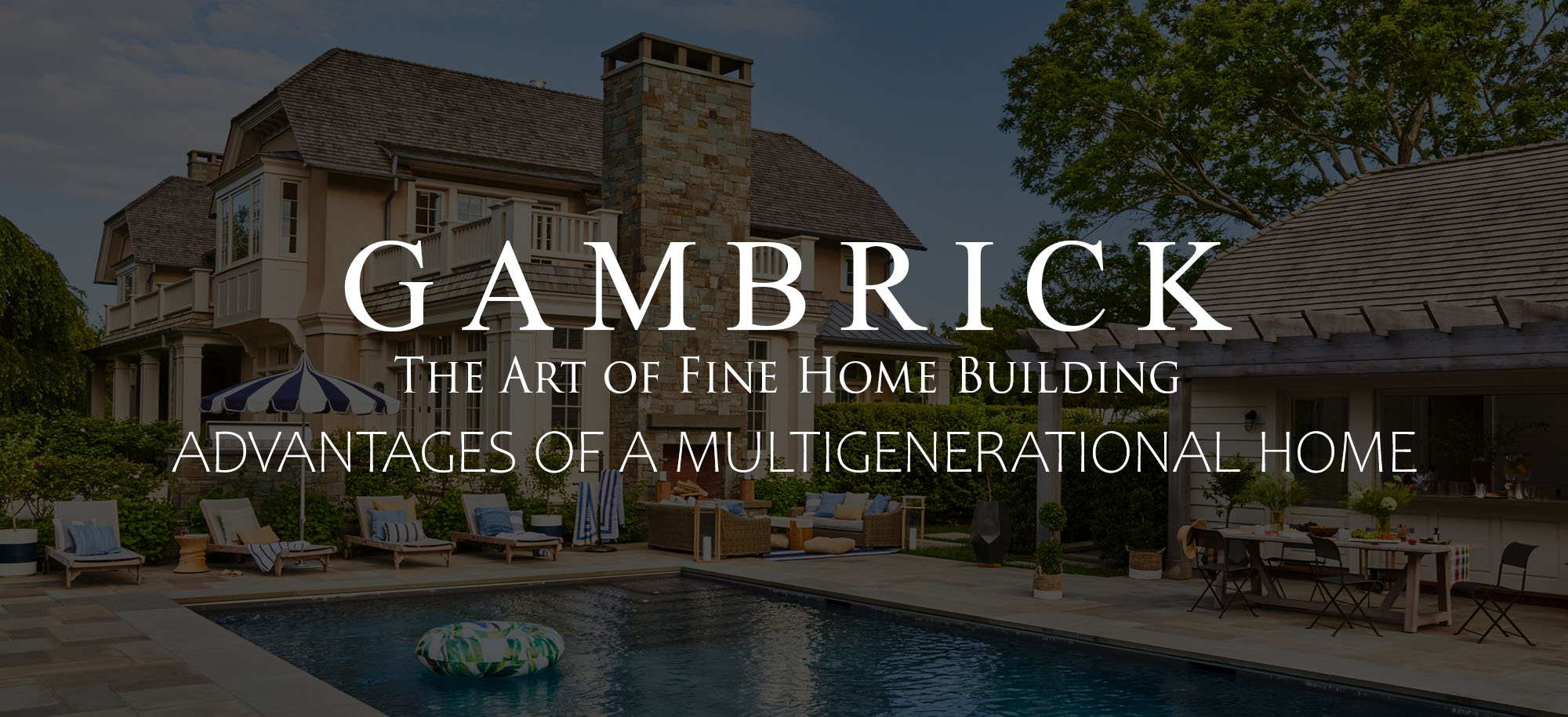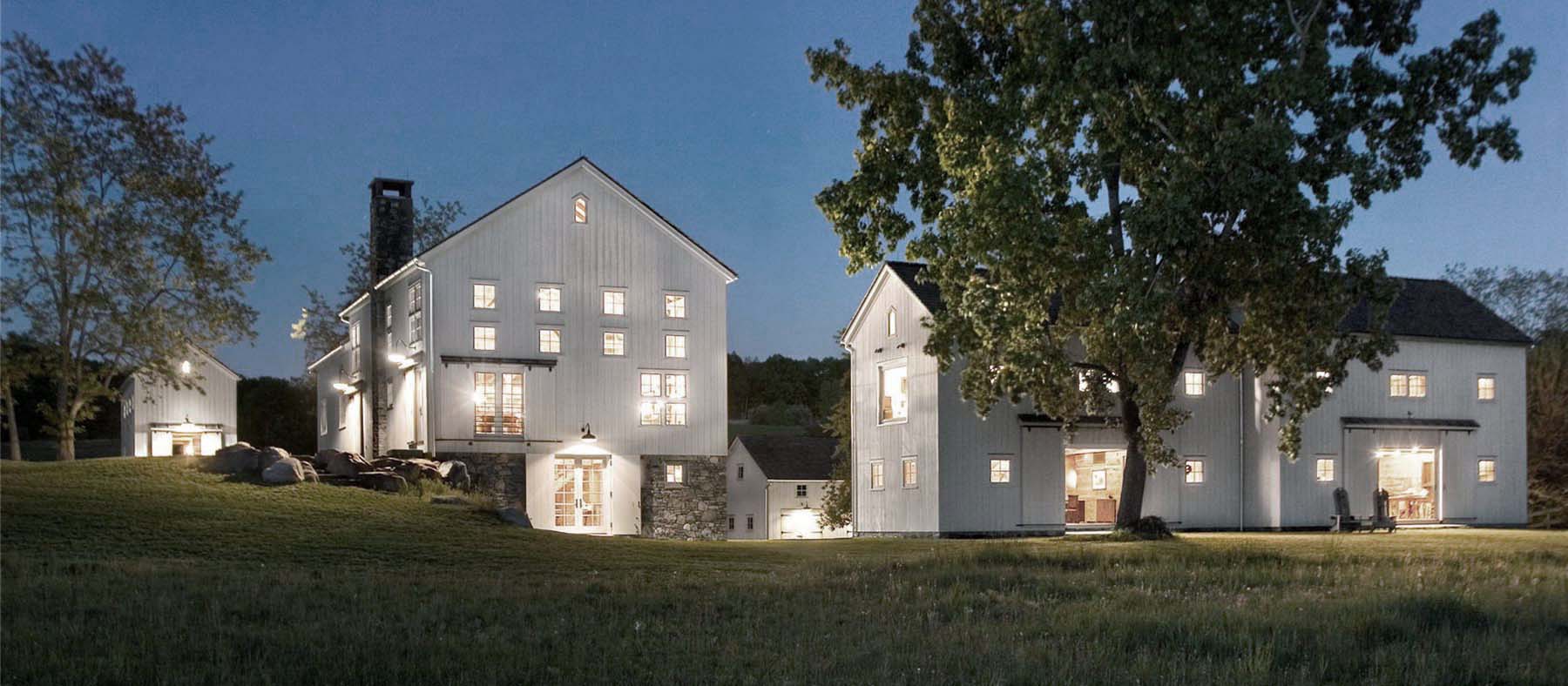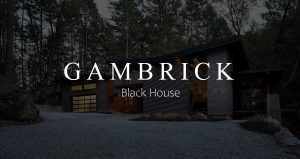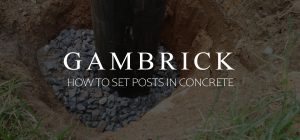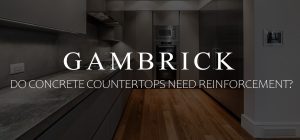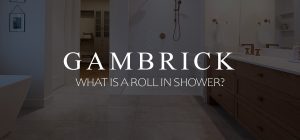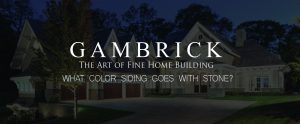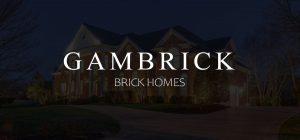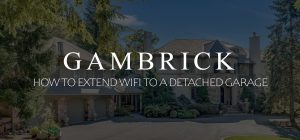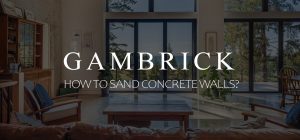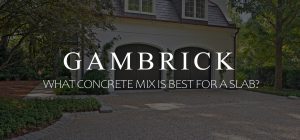Advantages Of A Multigenerational Home
In recent years, there’s been a steady rise in the number of multigenerational homes in America. Homeowner’s and their families are discovering new ways to get the most out of their home’s without having to spend a fortune. According to Pew Research, a whopping 64 million Americans live in a home that’s considered multigenerational. Grandparents, parents, and kids all living under one roof has gained traction over the past few year. Thanks in part to inflation, high unemployment, stagnant wages, rising home prices and some crazy healthcare costs. One of the many advantages of a multigenerational home is the money you can save by sticking together and splitting the bills.
While multigenerational homes may seem like a new concept to some Americans, the rest of the world has been doing it for generations. And so did we up until the 1950s. Our country was once full of families working hard and living together. A concept that was nearly abandoned after the great depression when people started making more money, had access to affordable housing and were offered cheap loans. Now, more and more families are seeking the old fashioned advantages of a multigenerational home.
Multigenerational Homes – An Accelerating Trend
While stuffing lots of people into one house might seem like a bad idea, it does have some big perks. Whether it’s saving money, sharing chores or offering care. There’s a lot to be said for living with family. This lifestyle choice is proving to be a great idea for people of all ages.
Of course, that’s not to say there won’t be any bumps along the way. The trick to multigenerational homes is designing spaces that work well for everyone involved. The grown ups need a place to relax, the kids need a place to play and everyone needs some privacy once in a while. When a home is properly designed with the right attributes in mind, living with family can be a rewarding lifestyle. On the other hand, if a home is poorly designed, cramming lots of people under one roof can quickly drive you insane.
Ahead we’ll discuss a few of the Advantages of A Multigenerational Home along with some design ideas for creating a great one.
Multigenerational Homes Save Money
Sometimes everyone having their own home isn’t the best financial idea. Maintaining two households undeniably costs more than sharing the expense of just one. By bringing family’s together you can split the cost among you and obviously save a lot of money on everything from the mortgage, insurance, electric, plumbing cable, internet, etc. Some of these bills are redundant and won’t go up much just because more people are living in the house. With bills like cable, Netflix, internet and the house phone, the price stays exactly the same no matter how many people are using the service.
The demand for multi generational homes is not slowing down. When the Pew Research Center released a report in 2018 showing almost one in every five Americans lives in a home considered multiple generational, this was record breaking news for the construction industry.
You can trace the upward trend from 26.8 million families in 1960 living together with two or more adult family members to 64 million families in 2016.
There are many benefits to living with family, but a few challenges exist as well.
Benefits
- Can help families save money
- Helps recent college grads pay the bills while hunting for their first job
- Can provide care for aging family members
- Helps with daycare expenses if family is home to watch the kids
- Helps single parents who may have limited resources and high child care bills
- The entire family receives communal living benefits of increased health, support, and prosperity
- You can afford more house for the same money
Challenges
- Chores and finances should be decided upon up front to avoid misunderstandings
- Living spaces should be geared to accommodate different age ranges
- May be difficult to meet needs for privacy
- Enough parking if everyone has their own car
- Make sure to have enough bathrooms for everyone
The Reason Behind Multigenerational Homes
It’s not hard to see all the Advantages Of A Multigenerational Home are why they’re such a hot commodity today. There are so many reasons why family members are deciding to live together it’s no surprise more and more people are trying it out.
Housing Crash
The housing collapse from 2006 to 2011 forced many people out of their homes with no money and no where to go. Foreclosures and short sales affected millions, so some families had no choice but to turn to a parent or other family member for help with housing.
College Graduates Can’t Find A Good Job
Many recent college graduates are finding out it’s tough to find a job in their field or the salary offered is not enough to afford living expenses and all the bills.
Aging Adults Want To Live With Family
When a parents or grandparents gets older and try to live on a fixed income the bills can get hard to pay. Especially if your living on your own. Often times it’s just nicer to live with family and friends around. Especially the grand kids.
Millennials Stay Home Longer Than They Used To
Millenials, those born between 1980 and 2000, make up almost one third of stay at home children. And they see no reason to move out of the house any time soon. Even if they wanted to it’s hard to afford it. Spending a few extra years at home to work and save money is generally a good idea.
Immigrants
Immigrant families tend to live together as a group far more frequently than American born families do. This is mainly due to the culture of where they come from. All around the world families live together in one house for their entire lives. Everyone having their own home is a definitely a Western trend created during a time when America was a very rich country where it was easy to afford a house. That’s quickly changing.
Single Adults
Some single adults living alone just like the idea of being with family and having loved ones around. Living by yourself for extended periods of time can be lonely. Recently single adults and those with children often find it’s easier to manage life if they have the support of family around them.
People Who Just Like Living With Family
It’s not a stigma or insult anymore to live with parents or grandparents. The idea of keeping the family together has a growing appeal. Moving out and living on your own used to be a sign of success, but that’s less and less the case these days. Better health, prosperity and financial security are all Advantages Of A Multigenerational Home.
Does Multigenerational Living Work?
It’s no surprise that the U.S. saw an uptick in multigenerational living as a result of the Great Recession. A larger family living together under one roof provides undeniable economic advantages. But does multigenerational living work?
The Advantages Of A Multigenerational Home are varied. For immigrant families the answer a resounding yes. Families moving to the United States, Hispanics and Asians especially, are more likely to live in multigenerational homes than American born families. The reasoning here is mainly two part. One being financial concerns and the second being culture. There’s no doubt sharing a home saves money. But the motivation isn’t always about not having enough money to pay the bills. Immigrant families tend to value a dollar and a good deal better than Americans do. They have enough money but see it as a waste for everyone to own their own home.
Another big issue is anything to do with family support. For anyone that feels it would be great to have family around, for whatever reason, the answer is yes. These types love multigenerational living. Help and support from family is a major reason people are living together.
The other big one are more practical financial issues. Meaning some Americans just don’t have enough money to do it alone. Multigenerational living saves money, provided everyone chips in and pays some bills of course.
The Rising Costs Of Child Care
The rising cost of child care likely has something to do with the shift toward multigenerational living. It’s not just single parents living with family, but more commonly married couples with kids living with their parents. Three generations in the same household is now the norm among multgenerational homes. It cuts costs and adds support. When grandparents can watch the kids, especially in a household with two working parents, it’s a huge benefit to everyone involved.
I don’t think many would argue it’s better for kids to be watched at daycare rather than cared for at home with family. It’s also better for the parents because they’ll save money and have piece of mind that their kids are home safe. And it’s better for the grandparents, dozens of studies show living with family during retirement years is a healthier lifestyle than living alone.
Sometimes this arrangement can cut out the cost of child care entirely. It also lets parents focus more on careers because they have additional support and cuts down on stress.
Types of MultiGenerational Homes
As a home builder, I routinely meet with clients seeking the Advantages Of A Multigenerational Home. A few years back, the demand for this type of housing wasn’t as intense as it is today. And realtors have noticed. Marketing for multi family homes has changed. No longer are these homes presented only as a duplex listing, or as strictly an investment property. Multi family homes are now being sold as multigenerational for large families in the market.
Below are types of homes that are suitable for multi-generational families:
Two Homes On A Single Lot
Two homes on a single lot exist more commonly in rural counties but you can find them in some urban areas as well. These are actually fairly common here at the Jersey Shore since landlords use them for seasonal rentals.
Apartment Addition
A big trend is to build a full apartment with it’s own kitchen, bedroom, bathroom and living room over the garage or as a second level to an existing ranch. It’s relatively easy to get a permit to build these as long as the home remains zoned as a single family home.
Two To Four Units
Here at the Jersey Shore there are lots of large older homes that have been segmented into 2,3 and 4 units. Generally they’re used as seasonal rentals but could easily be a multigenerational home. All the works already been done for you.
Side By Side
Here in NJ we have a lot of homes with a side by side design. These consist of a single building split down the middle making two completely separate homes with different house numbers. They can be sold separately and pay their own property taxes. They’re different from a two family in that even though they’re connected, they’re legally treated as two completely separate homes.
Custom Built Multigenerational Homes
Custom home builders like us have recognized the need for multigenerational housing and are offering this as an option to families looking to build a new home. The best way to get everything you need is to custom design the perfect home from the ground up.
Dual Master Suites
Dual master bedrooms are another trend that’s picking up steam. Check out our blog post here all about them. Basically these are homes that have two complete master bedrooms including a master bath and walk in closet. Perfect for a multigenerational home since these master suites can sometimes be as big as a small apartment.
How Can I Find A Multi-Generational Home?
The best way to find a multgenerational home is with a good real estate agent. Tell them exactly what you want and let them do the work. You could also search for homes online at any number of websites but you’ll have to weed through hundreds of homes by yourself. To actually see the homes you’ll generally need a realtor anyway so you may as well have them help you look.
Another problem we’ve had when searching for homes online is that some real estate websites don’t update as quickly as the MLS. Homes might be sold or pending by the time we find them. It can be very depressing to find the perfect home online just to find out that it’s not for sale.
A real estate agent can set up private searches for you. You’ll receive listings as soon as they come on the market and updates as soon as they’re made. Agent’s can also arrange tours of new home construction sites. And best of all, the services of a buyer’s agent are typically free to a buyer. Most home buyers find an agent’s help makes the process easier than going it alone.
The Pros And Cons Of Multigenerational Homes
The lack of privacy is often the hardest thing to handle as a multigenerational family. This is the complaint we hear the most. It can be hard to relax with so many people always around. When you get home from a hard days work do you want parents questioning you about your day like you 15. This type of living arrangement is definitely not for everyone. It has it’s ups and downs. But for some it’s a real life saver. Building personal spaces into the design is a must.
Another big complaint is the kitchen. Most adults have certain ways they handle the kitchen area and food. Now this area has to be shared with others which can cause issues. Dirty dishes, food left out, eating times and what food belongs to who are all things people need to discuss. It can be frustrating to come home looking forward to a meal just to find out someone else already ate it.
The laundry room is another big complaint. Other peoples dirty clothes can be a deal breaker, even if it’s family. If your used to keeping a clean laundry room and now there’s dirty socks everywhere you won’t be happy.
It’s little things like these that should be discussed before living together. And weighed against the many Advantages Of A Multigenerational Home.
Some More Advantages Of A Multigenerational Home
Privacy complaints and long waits for the bathroom are balanced out by the perks of having more family living under one roof. Having been raised with my grandparents in the house. I can say from firsthand experience that it’s a wonderful experience. Parents never having to worry about getting a baby sitter is a big plus. Having the opportunity to bond with grandparents is priceless. You’ll always have a full table at dinner. And there will always be people there when you need them. The people that really matter.
This type of living is also a huge perk for grandparents. You can look up dozens of studies highlighting the benefits of living with family as you get older. Specifically with grand kids. In areas known as blue zones, where families live together for generations, people live longer. And they don’t just live longer, they live better. Multigenerational homes lead to a healthier, happier lifestyle for everyone involved.
And science backs up the idea that close bonds with a grandparent benefit everyone involved. According to one study, kids who grew up close to their grandparents were less likely to be depressed as adult. While another study found that grandparents who live with family and stay active tend to live longer than those that don’t.
Tips for living together under one roof
Whatever the reason for moving multiple generations together in the same household, there are some fairly important things to consider in order to make the situation run smoothly. Goyer recommends first considering your house. “Ask yourself, ‘Do we need to modify or make it safer for older adults, children, people with disabilities?'” she said. “Consider how you can use the space so that people have space of their own. That’s important, especially if you’re moving in together and have lived separately, since all parties have been used to having control over their space.”
Goyer also recommends making it a priority to take time away for yourself, while also maximizing the opportunity for intergenerational exchange. “You can facilitate that connection between generations and make sure it happens by having family meetings and family game time, and checking in with people to ask how it’s going.”
Shared Responsibilities
Distributing chores and responsibilities among family members is a great way to ensure that everyone does their part.
Increased Family Bond
While most families come together on special occasions, multigenerational families have the luxury of seeing each other every day. By living under one roof, these families develop a high level of attachment and a much stronger bond. Here’s how:
- Grandparents are a role models for their grandchildren and grow closer through daily interactions while grandchildren learn to respect their elders.
- Grandparents feel more engaged and useful when they can provide help to their children and grandchildren.
- Many studies have shown that grandparents have a profound influence on their grandchildren by ushering in a loving atmosphere and healthy relationship.
- Loneliness is a common social problem for adults of any age. An empty home weighs heavily on people, making them feel disconnected from the rest of their family and community. Life spent with others leads to a better quality of life.
Increased Safety
Home security is a terrific benefit of multigenerational living. With multiple generations under one roof, a home is rarely ever left unoccupied for long. And living with other family members increases the chance that someone is present if anyone ever has an accident or needs help.
Privacy
One of the primary issues families face when shifting their lifestyle is the fear of losing privacy. With so many people under one roof, it can feel like there’s no place to turn when you want to be alone. This is an issue that should be considered from the very beginning. If your going to live with more people then this will at some point be a concern. You don’t have to build a room for every person in the house but areas do have to be segmented so you can sit alone once in a while. Even if it’s as simple as a kitchen table you can read at when everyone else is watching tv.
Finish the attic or basement or even a bay of the garage. Create a workout space, finish a deck or patio with a gazebo you can sit in and relax. Sometimes grown ups just need a place to sit alone for a little while to prevent life from driving you insane.
If you want to truly enjoy the many Advantages Of A Multigenerational Home then the privacy and comfort of everyone living in it should be addressed.
Increased Accessibility
Multigenerational homes require an eye for accessibility. Even if Grandparents can get around easily now, thinking ahead can save growing pains in the future. Open concept layouts are great for getting around. And, configuring bedrooms so that everyone can reach their private living spaces easily means everyone can remain as independent as possible.
And open floor plans are good for all sorts of other reasons too. Lids love them because it’s easier to run around and play without dealing with halls and doorways all over. Older homes tend to feel tight once all the furniture is in place. And parents like open floor plans because it’s easier to keep track of all the kids.
It’s no surprise that almost everyone building new homes today are opting for an open floor plan.
Main Floor Bedroom
When given the choice between main and second floor bedrooms in multigenerational homes, choose the main floor. Not only will they remain the most accessible as your family ages, but having one or two bedrooms on the main floor can create a natural separation between generations. While it might feel natural to put all of the bedrooms on the second floor, putting a few on the main floor offers extra privacy and some much needed breathing room.
This is also a big plus as we get older. Most older clients we meet with retire to a ranch because they don’t want to deal with walking up and down flights of stairs any more. Multigenerational homes will most likely at some point include someone that falls into this category so it’s best to incorporate this into the design.
Multi Purpose Rooms
It’s easy to convert a bedroom into something else, but it’s not always so easy to convert another room into a bedroom. Bedrooms usually require windows, a closet, and a door, so design your multigenerational home with this factor in mind. If your designing a home and think of all your spaces as dual purpose, you’ll have more flexibility along the way. Instead of having activity specific rooms like an office or an exercise room, it’s best to design as many bedrooms as possible and convert them when necessary. On a blueprint these kinds of rooms are called flex rooms. Or Dual purpose rooms. Click the link here to learn all about Flex Room Ideas and Designs. This way, you’ll always have plenty of flexible rooms that you can use however you like as needed.
Use Space Wisely
With several families living in the same home, every square foot counts. Get creative with spaces in the home and you’ll be a lot more comfortable. Think about better uses for some of the less utilized areas, such as the attic, basement, the garage. Rethink each room’s purpose and convert wasted areas into comfy living spaces instead. Everyone will be happier when they can spread out.
Most modern homes are actually poorly designed with a lot of wasted space. If your designing your own home this is easy to avoid. However, if your buying an older home, even a large one like a Toll Brothers model, you’ll have some rearranging to do.
Separate Entrances
Another design consideration to make in multigenerational homes are the entrances. If there’s a big difference in schedules, it might be a good ideas to design separate entrances. And it can provide your family with some additional privacy. Having the freedom to come and go as you please unnoticed can be a privilege some people won’t live without. Sure, living together ensures plenty of quality time. But being able to separate some of that can help each generation feel more independent.
Typically the front door is designed next to the living room so everyone will always know exactly when you leave and when you come home. That’s fine for a teenager but grownups don’t like people keeping track of their every move. Even a simple side or garage entrance would be a big plus here.
A down side of a second entrance is securing the home. Some families like having one main way in and out of the house while all other doors remain locked. It’s a toss up which way would work better and is definitely an issue worth discussing with the family.
To truly make the most out of the Advantages Of A Multigenerational Home you should tailor the design based the people who live in it. Remember a home is only as good as the people who live in it.
Conclusion
Whether you’re designing a new home, renovating or looking to buy. Know that there’s no such thing as a perfect solution. Living in a multigenerational home means customizing as much as possible and remembering to adapt when necessary. Be flexible. There are plenty of advantages with A Multigenerational Home, but there will still be a lot of opinions to consider and decisions to make. Everyone will have they’re point of view. What works for other families might not work for you. And when designing, you might even find that other people ideas lead to some surprising outcomes. The trick to living with more than one family is to communicate well and stay open to change so that everyone feels welcome.
Multigenerational homes are a reality for more and more American families each year. Living with family can definitely come with challenges. Still, if you plan ahead for issues and design your home accordingly, you can head off conflict before it starts.
By considering needs, privacy and accessibility, your multigenerational home will be one full of love and life.
If you have any questions or comments e-mail us any time. We’d love to hear from you.
